Name Himeyuri Maruひめゆり丸 Port of registry Kagoshima Fate Sold to Sulpicio Lines Launched 1963 Beam 14 m | Owner RKK Line Yard number 118 Name Don Sulpicio Length 93 m Builder Onomichi Dockyard | |
 | ||
The MV Doña Paz was a Philippine-registered passenger ferry that sank after colliding with the oil tanker MT Vector on December 20, 1987. With an estimated death toll of 4,386 people and only 24 survivors, it was the deadliest peacetime maritime disaster in history.
Contents
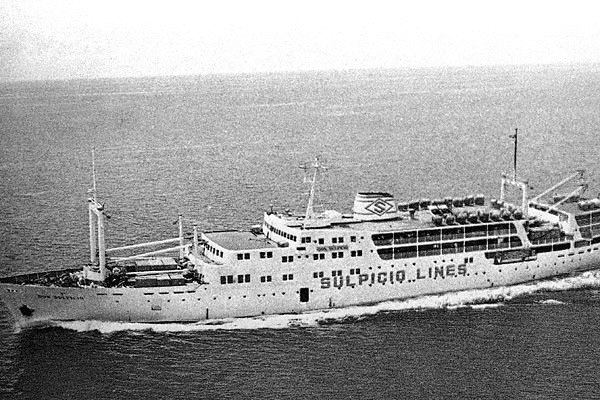
Doña Paz was traveling from Leyte island to the Philippine capital of Manila. The vessel was seriously overcrowded, with at least 2000 passengers not listed on the manifest. In addition, it was claimed that the ship carried no radio and that the life-jackets were locked away. But official blame was directed at the MT Vector, which was found to be unseaworthy, and operating without a license, lookout or qualified master.
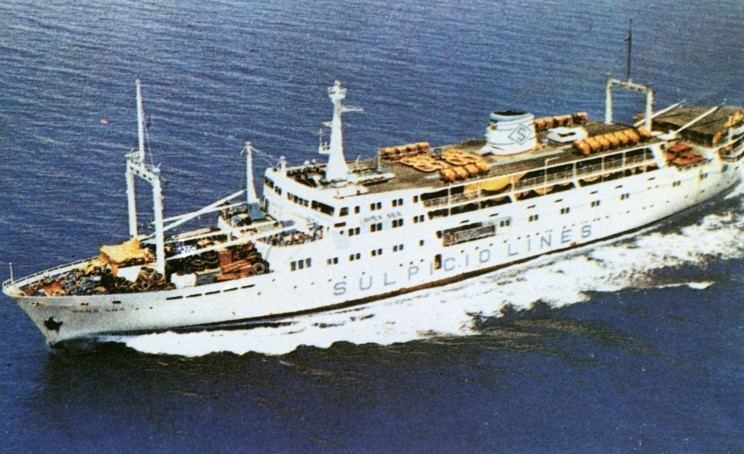
Mv do a paz part 1
Vessel
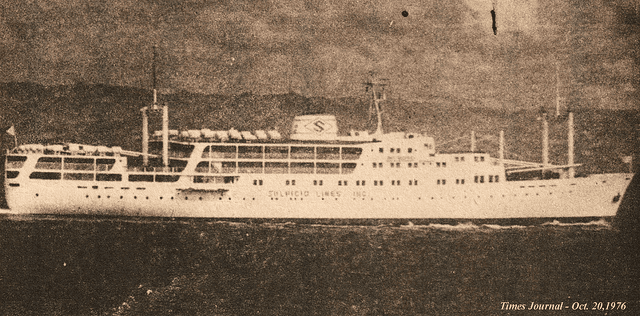
The Doña Paz was built in 1963 by Onomichi Zosen of Onomichi, Hiroshima, Japan, and was originally named Himeyuri Maru. During the time it travelled the Japanese waters, it had a passenger capacity of 608 people. In 1975, it was sold to Sulpicio Lines, a Filipino operator of a fleet of passenger ferries. It was renamed by Sulpicio Lines as the Don Sulpicio, and later, the Doña Paz.
Fire
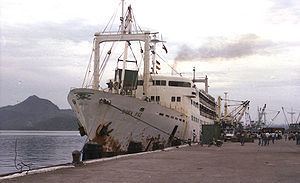
On 5 June 1979, while named the Don Sulpicio, the vessel was gutted by fire while en route from Manila to Cebu. All 1,164 on board were rescued but the vessel was beached and declared a constructive total loss. The wreck was repurchased from the underwriters by Sulpicio Lines, and the vessel was refurbished and returned to service as the Doña Paz.
Collision

At the time of its sinking, the Doña Paz was sailing the route of Manila → Tacloban → Catbalogan → Manila and vice versa, making trips twice a week.
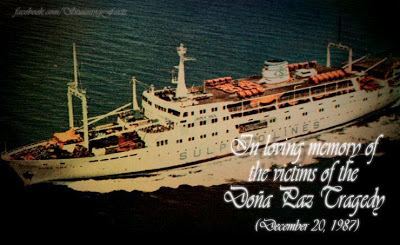
On December 20, 1987, at 06:30, Philippine Standard Time, the Doña Paz left from Tacloban City, Leyte, for the City of Manila, with a stopover at Catbalogan City, Samar. The vessel was due in Manila at 04:00 the following day, and it was reported that it last made radio contact at around 20:00. However, subsequent reports indicated that the Doña Paz had no radio. At around 22:30, Philippine Standard Time, the ferry was situated at Dumali Point, along the Tablas Strait, near Marinduque. A survivor later said that the weather at sea that night was clear, but the sea was choppy. While most of the passengers slept, the Doña Paz collided with MT Vector, an oil tanker en route from Bataan to Masbate. The Vector was carrying 8,800 US barrels (1,050,000 l; 280,000 US gal; 230,000 imp gal) of gasoline and other petroleum products owned by Caltex Philippines.
Upon collision, the Vector's cargo ignited and caused a fire on the ship that spread onto the Doña Paz. Survivors recalled sensing the crash and an explosion, causing panic on the vessel. One of them, a passenger named Paquito Osabel, recounted that the flames spread rapidly throughout the ship, and that the sea all around the ship itself was on fire. Another survivor claimed that the lights onboard had gone out minutes after the collision, that there were no life vests to be found on the Doña Paz, and that all of the crewmen were running around in panic with the other passengers and that none of the crew gave any orders nor made any attempt to organize the passengers. It was later said that the life jacket lockers had been locked. The survivors were forced to jump off the ship and swim among charred bodies in flaming waters around the ship. The Doña Paz sank within two hours of the collision, while the Vector sank within four hours. Both ships sank in about 545 meters (1,788 ft) of water in the shark-infested Tablas Strait.
It reportedly took eight hours before Philippine maritime authorities learned of the accident, and another eight hours to organise search-and-rescue operations.
Casualties
Only 26 survivors were retrieved from the water. Twenty-four of them were passengers from the Doña Paz while the other two were crewmen from the Vector's 13-man crew. None of the crew of the Doña Paz survived. Most of the survivors sustained burns from jumping into the flaming waters.
According to the initial announcement made by Sulpicio Lines, the official passenger manifest of the Doña Paz recorded 1,493 passengers and 59 crew members aboard. According to Sulpicio Lines, the ferry was able to carry 1,424 passengers. A revised manifest released on December 23, 1987, showed 1,583 passengers and 58 crew members on the Doña Paz, with 675 persons boarding the ferry in Tacloban City, and 908 coming on board in Catbalogan City. However, an anonymous official of Sulpicio Lines told UPI that, since it was the Christmas season, tickets were usually purchased illegally aboard the ship at a cheaper rate, and those passengers were not listed on the manifest. The same official added that holders of complimentary tickets and non-paying children below the age of four were likewise not listed on the manifest.
Survivors claimed that it was possible that the Doña Paz may have carried as many as 3,000 to 4,000 passengers. They took as signs that the ferry was overcrowded the fact that they saw passengers sleeping along corridors, on the boat decks, or on cots with three or four persons on them. Of the 21 bodies that had been recovered and identified as passengers on the ship five days after the accident, only one of the fatalities was listed on the official manifest. Of the 24 passengers who survived, only five were listed on the manifest.
On December 28, 1987, Representative Raul Daza of Northern Samar claimed that at least 2,000 passengers on board the Doña Paz were not on the ship's manifest. He based that figure on a list of names furnished by relatives and friends of missing people believed aboard the ferry, the names having been compiled by radio and television stations in Tacloban City. The names of these 2,000+ missing passengers were published in pages 29 to 31 of the December 29, 1987, edition of the Philippine Daily Inquirer.
In February 1988 the Philippine National Bureau of Investigation stated, on the basis of interviews with relatives, that there were at least 3,099 passengers and 59 crew on board, giving 3,134 on-board fatalities.
In January 1999 a presidential task force report estimated, on the basis of court records and more than 4,100 settlement claims, that there were 4,341 passengers. Subtracting the 24 surviving passengers, and adding 58 crew gives 4,375 on-board fatalities. Adding the 11 dead from the Vector crew, the total becomes 4,386.
Given the estimated death toll, Time magazine and others have called the sinking of the Doña Paz "the deadliest peacetime maritime disaster of the 20th century".
Reactions and aftermath
President Corazon Aquino described the accident as "a national tragedy of harrowing proportions...[the Filipino people's] sadness is all the more painful because the tragedy struck with the approach of Christmas". Pope John Paul II, Japanese Prime Minister Noboru Takeshita and Queen Elizabeth II of the United Kingdom conveyed their official messages of condolence.
Sulpicio Lines announced three days after the accident that the Doña Paz was insured for ₱25,000,000 (about US$550,000 in 2011 dollars), and it was willing to indemnify the survivors the amount of ₱20,000 (US$472 in 2011) for each victim. Days later, hundreds of the victims' kin staged a mass rally at Rizal Park, demanding that the ship owners likewise indemnify the families of those not listed on the manifest, as well as to give a full accounting of the missing.
According to the initial investigation conducted by the Philippine Coast Guard, only one apprentice member of the crew of the Doña Paz was monitoring the bridge when the accident occurred. Other officers were either drinking beer or watching television in the crew's recreation quarters, while the ship's captain was watching a movie on his Betamax in his cabin. Nonetheless, subsequent inquiries revealed that the Vector was operating without a license, lookout or properly qualified master. The Board of Marine Inquiry eventually cleared Sulpicio Lines of fault in the accident. In 1999, the Supreme Court of the Philippines ruled that it was the owners of the Vector who were liable to indemnify the victims of the collision. Some of the claims pursued against either Sulpicio Lines or the owners of the Vector, such as those filed by the Cañezal family (who lost two members) and the Macasas family (who lost three members) were adjudicated by the Supreme Court, which found that even the families of victims who did not appear on the official manifest were entitled to indemnity. Caltex Philippines, which had chartered the Vector, was likewise cleared of financial liability.
In popular culture
The National Geographic Channel premiered a documentary about the Doña Paz entitled Asia's Titanic on August 25, 2009.
